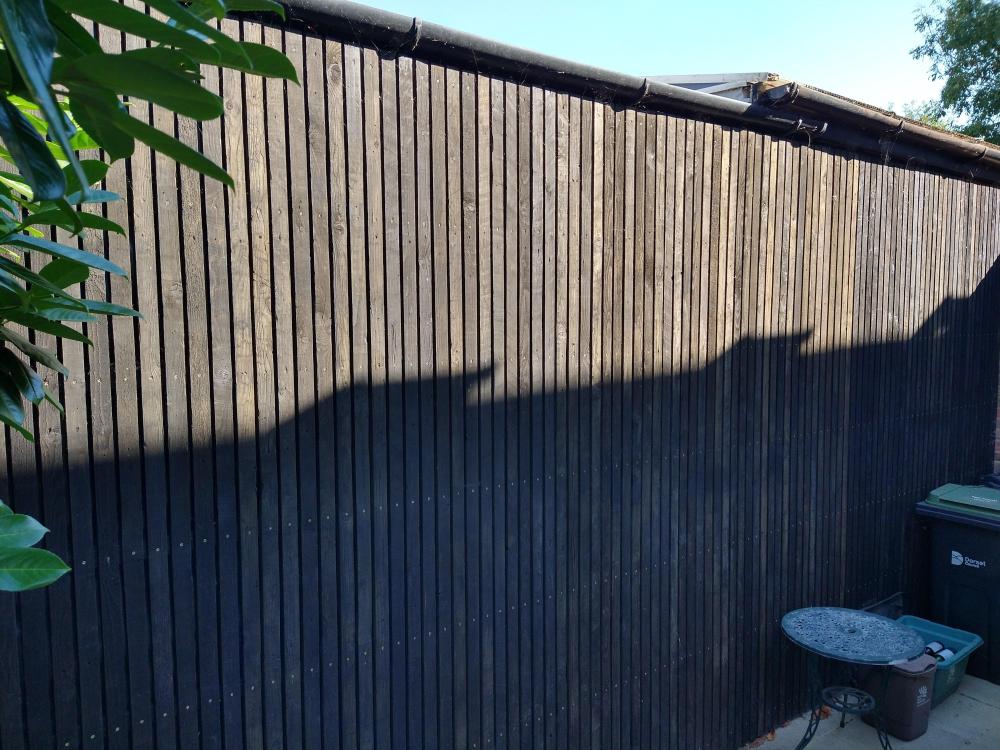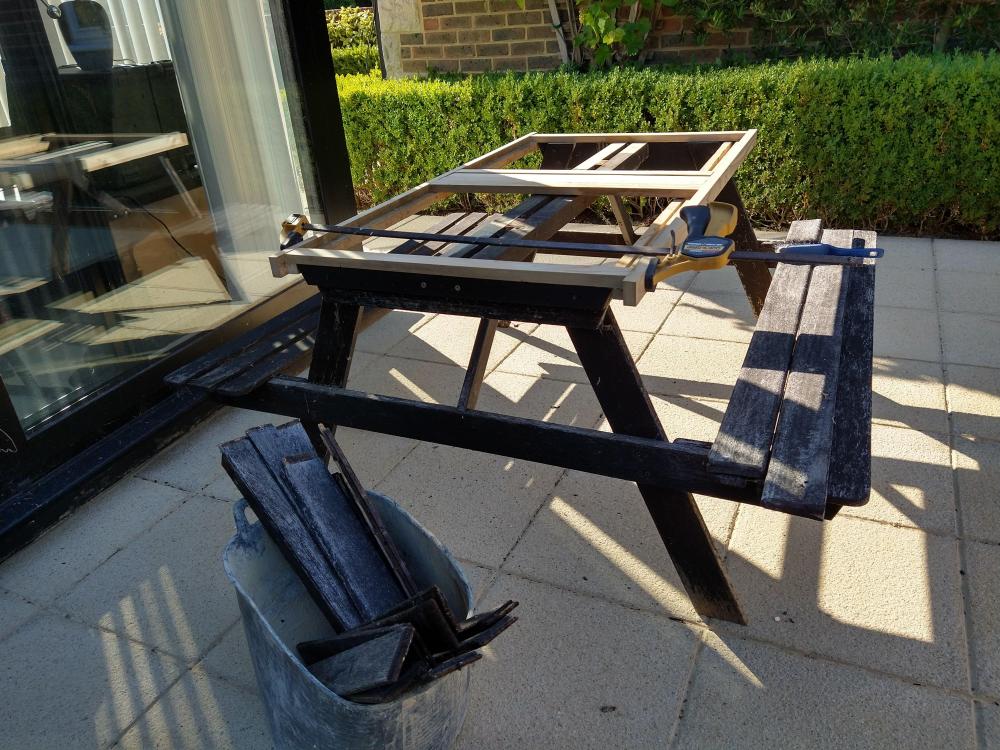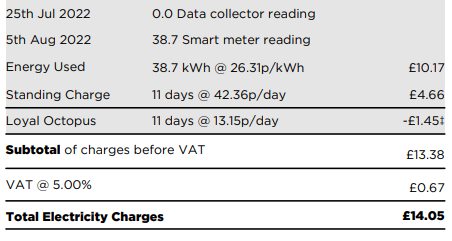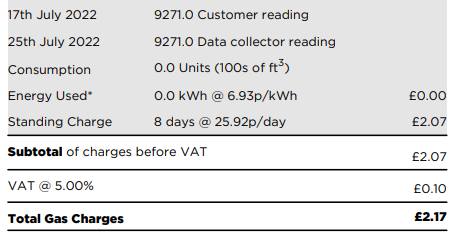Leaderboard
Popular Content
Showing content with the highest reputation on 08/10/22 in all areas
-
All the various predictions at the moment are entirely based by taking the current wholesale price of gas and electricity and extrapolating it forwards. Whilst this is fine in the short term, it has little predictive power in the longer term. The price of gas has doubled since early June, hence the massive recent increase in predictions for the next energy cap and the one in January which would see the full effect of recent increases. Predictions from just three or four months ago were wildly wrong. Forecasts of a similar price next winter are worthless, considering the price of gas has doubled in two months it could as easily double again or fall by 50%. I am getting somewhat annoyed that politicians are not being honest about what is going on. This is almost 100% due to the war in Ukraine and sanctions against Russia. Russia has retaliated by massively reducing the gas supply. Astonishingly the price of gas has gone up so much that Europe is giving more money to Russia than ever. Indeed the correct way to hurt the producer of a commodity is to increase supply and reduce use so that the price of the commodity falls. We have managed to achieve the opposite effect. We are basically having an economic war with Russia. There were some articles in the papers about it last week. The Russians think that we will give up before they run out of the ability to fight Ukraine. I think people are hardier than they realise, but telling them honestly what is happening would help a lot. I find it quite bizarre that the Daily Mail etc blame this on renewables which actually are helping the situation. That electricity from the new Hinkley station will also be looking a lot better value than originally. Gas is a more regional commodity than oil and because so much of it is used for domestic heating in Europe, it also has less elastic demand. Thus the producers are in a much more powerful position than they are with oil, where substitution and buying it from elsewhere are easier. Basically it is a lot easier not to drive than it is not to turn on your heating and gas boilers don't have any alternative in the short run. Anyway we have got ourselves in a very difficult situation I am in the fortunate position that I have an efficient house and I can afford the increases. Some people are going to be wiped out by this. It is not easy for the government to do anything about it. They would basically have to borrow money to pay people's energy bills. With almost 28m UK households, it would cost over £30bn a year to stop bills going up more. They were supposed to be looking at the pricing of electricity as fixed cost producers are coining in at the moment. I guess the windfall tax is an easy way to capture this. The price of gas, however, is simply driven by the rising price of gas. The long term solution is more renewables and more insulation. The short term solution is the end of the war, something that I wouldn't begin to try and predict.3 points
-
Highly recommended. we don't have one on what is effectively a £400k job. My pet subject. In my business we allocated a fixed, and low, number of skips, but also had a plan for what could go in them and what to do with the rest. On occasions I had skips emptied and refilled properly: Air is very expensive to cart to tip and pay landfill on, and the skip companies make a lot by sorting and consolidating. Site manager had to fill in a form of approximate contents.....so it became easier to think rather than dump. A couple of examples of savings. A few contractors really bought into this, and I once found our electrician's boss flattening lighting boxes and tying them up neatly, reducing volume by 90%...he then took them to a recycling centre. Another company MD (we were in a waste reduction group) banned skips on a house project and used hippo bags, allocated to different products. His surprise saving was in battens. Prior to this the roofers got to the eaves and sawed off the timber , and it fell to ground then was skipped. With Hippo bags they didn't fit so might as well take them up and reuse as cut to put in the bag. Similarly, a bag full of half bricks is fairly obvious and unjustifiable. Damaged bricks can obv be hardcore. In a skip they disappear. In our study we found that the cost of a skip is not £300 or whatever, but about £2,000 when you included materials that were being dumped without thought , or shouldn't have been bought in the first place. Timber packaging from steel deliveries we gave to schools for woodwork if we hadn't used it for shuttering. The big contractors claimed and boasted of 'zero waste'. But it wasn't true....they defined zero as 'what couldn't reasonably be recycled'.2 points
-
not just imagination but perhaps, with a few exceptions, also: moral fibre / creativity / intellectual capacity / any interest in or empathy with the people they are supposed to be serving / leadership skills / negotiation skills / emotional intelligence / persuasion capabilities / sense of economic reality / ability to share and adhere to the truth - shall I go on?2 points
-
From recent tv interviews, if Gordon Brown was on the list, he would get my vote. I never thought I would say something like that.2 points
-
The average numbers, which are good enough for most things, are here: https://www.ofgem.gov.uk/information-consumers/energy-advice-households/check-if-energy-price-cap-affects-you These are the Typical Domestic Consumption Values which OFGEM use to get to £1971 etc, and their 3 levels. https://www.ofgem.gov.uk/sites/default/files/docs/2020/01/tdcvs_2020_decision_letter_0.pdf They still seem to be using the 'current' ones for the Price Cap. Our media, being useless plank-like scaremongering morons, use the middle number and pretend it applies to everyone. eg .28*3100+.45*365+.27*365+.07*12000 = 1970.8.2 points
-
2 points
-
In these times of rising costs and shortages of supplies, I though it would be great to find out what people have achieved by recycling materials. I can kick-off with our storeroom floor made from the original roof trusses demolished to make way for the new attic trusses above our garage. It used up nearly all of it which struck me as being very jammy indeed ?1 point
-
There are issues with oversizing. The modulation range of the heat of pump, usually about 2.5:1 This is not an issue when at the lowest temperature outdoors, but becomes apparent when the outside air temp is in the 5 to 10 degC range. At 11 degC outside your heat demand is half your design case, so about 3kW. If your heat pump cannot modulate to that level, you then need a buffer added to the system.1 point
-
No electric heaters just wrap up. I wasn’t kidding when I said put a jumper on. If I can survive a winter in this old farmhouse rental with what seems like zero insulation you can survive a broken MVHR in a modern well insulated house 😂1 point
-
Just grab the bull by the horns, and tell your installer the "problem" is yours, not theirs. Conversation over, nobody gets hurt1 point
-
1 point
-
They clearly don’t model all the scenarios. Could a war have been predicted maybe not. Could Russia throttling the supply of gas to Europe be predicted in some way then probably yes. Germany is in a significantly worse predicament. My guess is there will be pressure put on Zelensky to reach some negotiated position with Russia in exchange for Russian gas supplies to be increased.1 point
-
Like the real BoJo, my avatar creation was very much deliberate. There is nothing accidental about this man. He plays the fool very well, but in reality he is an evil calculating sh!t.1 point
-
The other way to look at the heat loss. Say you have an airtightness of 2m3/m2 at 50Pa., Your infiltration rate is 0.1358. So inputting that in to a ventilation heat loss calculation Qv = 0.33 × n × V × ΔT watts. So say your volume is 300m3 0.33 x 0.1358 x 300 x 22 = 295W So at an airtightness of 2 if your house has a volume of 300m3 your ventilation heat loss without MVHR is 300W. If your house is is bigger small just change the 300 figure. Rules of thumb do not apply1 point
-
Time and again when serious problems like this come along the government appears to be seriously lacking in imagination.1 point
-
No reason why not, but a few lean mixes in the mixer won't break the bank, and won't scuff.1 point
-
Yes, I have run into this. I have an MCS install, but I have the letter they sent the DNO, but I do not have the DNO's response letter. I emailed the DNO asking for it and got no response.1 point
-
No problem, provided plenty of assistance to you on this and the ASHP saga, can’t wait for that to be revisited…..1 point
-
Wasn't fantastic, but wasn't terrible either. I think the first test was about 0.55 ACH. That said, I'd still do best to fill all visible gaps as everything adds up and there might be other things later that happen that you don't have such easy access to or even notice.1 point
-
If the walls are dry and properly pointed they will have a bit of thermal resistance anyway. The floors, roof and windows also play a big role in thermal efficiency. You can use a heat pump but if the house is poorly insulated and not fairly airtight it will cost a fortune to run.1 point
-
What trade and why does he think it should not be zero rated? Pay his bill net of the VAT and see if he bothers chasing it (but make sure you don't need him back)?1 point
-
Or OLED tv showing a scene of your choosing. Oh, on second thoughts, forget that.1 point
-
1 point
-
So they are saying it is not permitted development. So next step, a planning application. Note they have not indicated that a planning application would be refused, only that they believe it requires planning permission. DO NOT mention anything about amenity land in the planning application, refer to it as your garden ground.1 point
-
and thank you to all the other suggestions. this forum, once again, proves how awesome it is. 🤘1 point
-
No problem, just seen the red circle, keep the drill as small as possible and you will be fine. The amount you are removing is minimal and you are very close to heal anyway. Get on with it.1 point
-
Is that how you would like to be addressed from now on? Seems very appropriate 😁1 point
-
+1 It's not clear how it scales to people above and below average due to standing charges and the like.1 point
-
1 point
-
I had suggested Intello fabric strip to cover the whole double joist and tape to the adjacent fabric, but I missed your point about it running the entire width of the house so you will likely have a gap at the ends?1 point
-
It is for plenty of items yes, not so good for small light things, the paint gun sometimes blows them off! Big things I would usually suspend in the place I want to paint and cure because moving big wet items is just asking for trouble. I think I would paint kitchen doors on something like that little trestle, or I would set up 2 of them and run two pieces of wood between them to form a long platform I can stage 2 or 3 items on at once. The more items you can prep and lay out for paint the more efficient and economical the whole process will be. I have used 2 litres of thinners to clean the gun about 4 times in the past 4 days, only to paint 1 item. I could have painted a whole car and still only washed the gun 3-4 times. I have used about 8 measuring cups, loads of rags, so it was quite inefficient. Gun cleaning takes a me a good 10-15 minutes to do it properly - that's a waste of time to keep doing. I have painted loads of things, tables, chairs, Land Rover's, doors, lights, cabinets, to name a few, and each thing warrants a slightly different option for the DIY painter at home. Commercial shops use things that look like clothes rails (I nearly bought a cheapy Ikea clothes rail for painting loads of downlights) and little copper or stainless steel hook things, I have some of those, they can hook into stuff then I hang them from screws in the roof trusses - just watch you don't disturb bits of wood or dust which then falls onto your nice fresh paint! They also use things that look like sort of odd guitar stand things and weird jigs for holding a myriad of panels.1 point
-
If you were close to Glasgow I would happily. I don't have anything to paint now for a while (unless I start another project) so you would need to bring your doors!1 point
-
I ca see no reason for going fixed, and my focus is on reducing usage and exploiting my solar more effectively.1 point
-
I considered a waste veg oil/waste engine oil fed Petter engine with a 3kW alternator on it - I have the engine... My friend has in his barn a Lister D standing engine with a 3kW, 3phase squirrel cage motor on it, we wired it up to a bank of capacitors to convert it to 1ph and he wired it directly into 1 of the 2 elements in his hot water cylinder. That was connected to a 500litre tank that old oil, red diesel, veg oil got tipped into, through a big filter and into the engine. In the summer (when the wood/coal fired range is not on) he will go out in the morning and start it up (hand start) 1 hour later his cylinder contains enough hot water for himself for the day including a long shower. We built that about 10 years ago, still not had an oil change that engine!1 point
-
1 point
-
Yes, that's the component I'm referring to. It would be a shame to lose those permanently and then have Octopus withdraw this tariff in the near future.1 point
-
If I stop using the oven, the dishwasher and the washing machine on warm cycles, oh and stop welding things, I think I could make it work fairly soon. Wife doesn't seem to care about the latter, only the former. I just need to solve those key appliances, welder first actually, then I think I could make it happen. Big battery capacity and big inverters to lead a normal life.1 point
-
1 point
-
1 point
-
1 point
-
Look perfect. We'll done. Thanks for sharing the tips. I will surely need as many tips ss possible. Is it possible to paint door and cabinet without taking the doors off the hinges. The tiles will be repainted or retired and work top installed with née sink and taps. So no issue with spray mist going every where. Can the door be dried vertically?1 point
-
Post and Beam 2m over 18m is rather steep. OK but not comfortable for most cars or people. Also remember you need to level off at the road, so that uses some of your 18m. 2m over 16m will be 12.5% Kelvin, The bellmouth entrance is likely to be required as tarmac, to stop stones getting on the road. Whatever the material, if you can contrive a slight rise onto your plot then no water will run in. With option 2 a slight crossfall (as the existing slope) will shed the water off the side. If you have any abnormally steep country roads near you, then try driving them and imagine as your drive.1 point
-
Bumping this up with some more upcycling I did today. Still had a few lengths of batten left over after using most of it for this bit of cladding to one of our boundaries: (not our scruffy roofline, but a neighbours!) This time I'm using it to rebuild the top of a picnic table that's been slowly falling apart: Not the ideal timber but I will give it all a good coating of paint. Should give it a couple more years of useful life.1 point
-
Ouch. Talking to a New York based expat today, and he is expecting a 6k energy bill that he is paying out of the rent for his house in London. If you are paying the bills, then I'd say that you should keep the £400 and the £150, to count against a bit of the blank cheque in possession of your tenants. But ranting heads (ie TV company correspondents) on the TV are saying watch out for dodgy landlords who pay the bills trying to keep the refund. All of them - planks. The only defence is an ultra-efficient house.1 point
-
Indeed! You would have thought the Ethernet version should be cheaper as less complexity, no need to make and supply a battery or wifi module. I had thought that maybe Ring were taking advantage of PoE being a relatively new technology, but Google tells me PoE has been around as a standard since 2003! So it’s just raw exploitation.1 point
-
1 point
-
Just be canny on the control- fridge compressors don't like short-cycling and the normal control strategy with a capillary stat is cut-in at setpoint, chill the coldplate to (say) -10c or so, rinse and repeat.1 point
-
It’s been over a year since we got our completion certification and we’re still mopping up tasks in the garden and generally cleaning up. It occurred to us that some aspects of the discovery process of the build may be off use to others on BuildHub. It’s too hot in here: Thermal modelling limitations. Our thermal modelling done as part of the design stage SAP suggested we had minimal thermal gain problems. However we suspected that thermal gain from our east facing windows would be a problem and indeed it has been. The first action we took was to put on a solar film on the outside of our east facing windows. After some research we opted for Johnson PD75 which claims to reduce thermal gain by 40%. It cost £1,170 so seemed like a good place to start. Well, it may have helped but by mid May it was clear it was not enough and we would need something more. We looked at air conditioning units and decided we would retrofit some. We hadn’t planned on this and the thought of messing up the clean lines of the build and the pristine plaster work did not appeal. Purely by chance it turned out that the false wall in our bathroom built at the request of my wife and much muttering from me (who needs somewhere to put a wine glass while your in the bath) was a saviour. It meant we had a service void from ground floor to second floor in which to route pipes to the internal units. We contacted Mr Harris and he kindly lent us the pump gear required for installation testing, so far so good. We identified the units with the best energy efficiency only to discover you are not allowed to purchase them without having confirmation the installation will be done by a certified F-gas installer. We wanted to do the main parts of the installation ourselves and just have the F-gas engineer do final test and connection. Sounds reasonable but we had a lot of difficulty finding anyone. Mr Harris came to the rescue again and recommended Artech Air who were unbelievably helpful. We ended up with two Midea Blanc units, a 2.5 kW for our bedroom and a 3.5kW for the open plan living area. Result – bliss, and a very reasonable bill for £1,800. In the long term they will add to the comfort of the house all year round. On a slightly different subject MVHR summer bypass. It sounds perfectly reasonable, don’t heat the incoming air form the outgoing air in once a set temperature threshold is reached. The incredible heat of the last month has made us completely rethink it’s use. If the air inside the house is colder than the outside air, then cool the incoming air ie you don’t want to bypass the heat exchange. Also when it very hot between 9:00 and say 20:00 don’t run the MVHV, there is plenty of air in the house and we certainly never felt stuffy. We set the MVHR scheduler to do this for us. Similarly in winter it goes off at 22:00 and back on at 07:00. PV We didn’t put any PV on when we built, the house should need such small inputs it simply didn’t make sense in carbon or cost terms, or so we thought. Two things changed our minds, the air conditioning and we bought an EV. Doing anything more than 4kW is a pain as it involves more certification and silly cost items like Southern Electricities £300 fee for observing testing on equipment that was already certified on the MCS database. Again we had not planned this in so it was a retrofit...grrrr. Very annoying as we were pretty smug about having thought through the whole build. Fortunately our standing seam roof made it as easy as it could be to fit panels and hide all the wires. With the panels added we are still in surplus on the air conditioning units, not cooling for free as we had to pay for the panels and inverter, but no additional utility cost. Bye the way this was done before some nameless psychopath started a war and energy prices rocketed. The house now sits at a very comfortable 23c while not drawing any energy from the grid. We even have enough surplus to charge the EV between 10:00 and 15:00 on sunny days at a very slow 6A. We also opted to put in battery storage which we ordered in February and has only just arrived, it should have been 8.2kWh but in the delay they manufacturer introduced a 9.5kWh version for not a lot of extra money. We’re not up and running with the battery as the manufacturers decided to change the inverter battery connection cables with the new model and there are no cables shipped with the battery. I must confess I found it very hard to see the funny side of this. House wiring We did this ourselves and got it tested and certified, but made no provision for an EV charger, inverter and PV. Fortunately we did put ‘Routabout’ access points into our floor intended to allow access should anything go wrong. We also have loose lay flooring which has made the four times the utility room floor has been up no drama. Providing access to fix and change is something definitely something that should be done early not as an afterthought, when we put the traps in we had no idea how useful they would be. Fixings and fastening Our build is ICF and while it’s great in may ways it does present some interesting challenges when it comes to mounting anything on the walls. The ICF system we used came from JUB and has a very tough vertical nylon strip every 150mm about 30mm from the internal surface. With a course thread screw you can hang things like TV’s but not heavy stuff cupboards. For heavy items it’s a case of drilling into the ICF concrete core 75mm internals and 170mm externally from the ICF surface. This makes for a significant cantilever, internally this is fine you just use big fastenings. Externally the problem is two fold, 1700mm cantilever and you don’t want any thermal bridging, this makes using big fastening as real no no. We ended up using four fastening types: Internally we used cheap and easy to use concrete frame fasteners for heavy stuff. For lighter stuff on plasterboard we used GripIt fastenings which do the job remarkably well. The largest size claims to be able to hold 70kg, but I wouldn’t trust it with anything like that. Externally we use Fischer ‘Thermofix’, expensive and not available in this country. Fischer say they don’t sell enough here to make it worth there while. It seemed lost on them that we were buying from Germany along with every other UK user of the fastening. For light external fixing we used pasta twirls supplied by JUB. Useless for anything heavier than a letter box. DIY cabinets We found we couldn’t always source ready made furniture that was the size we needed. Some friends run a bespoke kitchen business and pointed us a site “wood online” who make up panels to your specification complete with edging. Using a ‘Pocket hole’ jig and these panels allows you to create you own furniture simply and quickly at a fraction of the bespoke cost. We also found some very neat panel clips for panels that need to be removed for access. Garden We finally got round to sorting out the garden. It’s small, just 11m by 5m and like a lot of self builds it had been used as a storage area (dumping ground) during the build. As we’re getting on a bit we wanted to make it low maintenance and low water. Raised beds and a patio area seemed to fit the bill. As the house is a contemporary build and we wanted to the garden to complement the house which is white and two shades of grey. For the patio we have used 600 x 600 porcelain tiles for ease of handling and laying. Getting a patio right is not the easiest of jobs and I was not looking forward to. With the patio base prepared, materials were order, tiles on Tuesday followed three days later by 5000kg of limestone chippings. Of course it just happened to be one of the hottest weeks on record…returned the rapid set tile cement and bought standard set. This still went off at a frightening rate. Trying to get a large are flat and true is not as easy as it sounds even when you’ve done all the preparation. With the first slab set to the correct run-off the other tiles were laid using it as reference. Despite our best efforts to get it right, the first tile was just off and as a result by the tile the 8th tile in the row was reached we were using a significant amount of tile cement, about 10mm deep. The four 20kg bags of cement that should have done the whole job disappeared quickly and another 7 bags were required to complete the job. The hoop and wedge helped keep everything flush and the result is perfectly acceptable. Lesson learnt, do buy the expensive laser measuring and levelling gear at the start of the build, it’ll pay for itself many times over by the time you finish. I’ll know for the next build, however my wife may well threaten divorce if I mention the idea….1 point
-
1 point




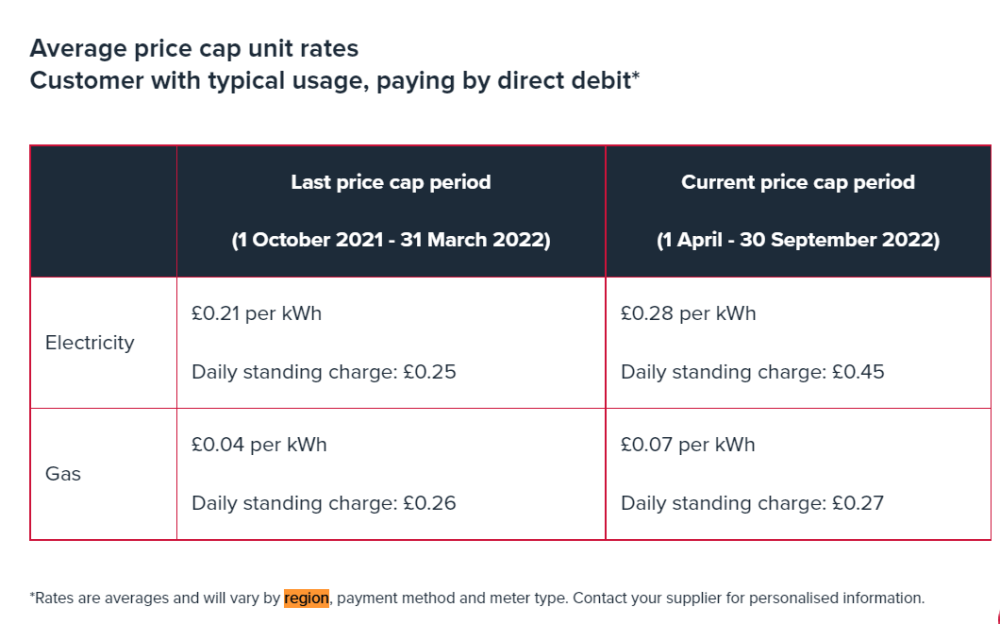



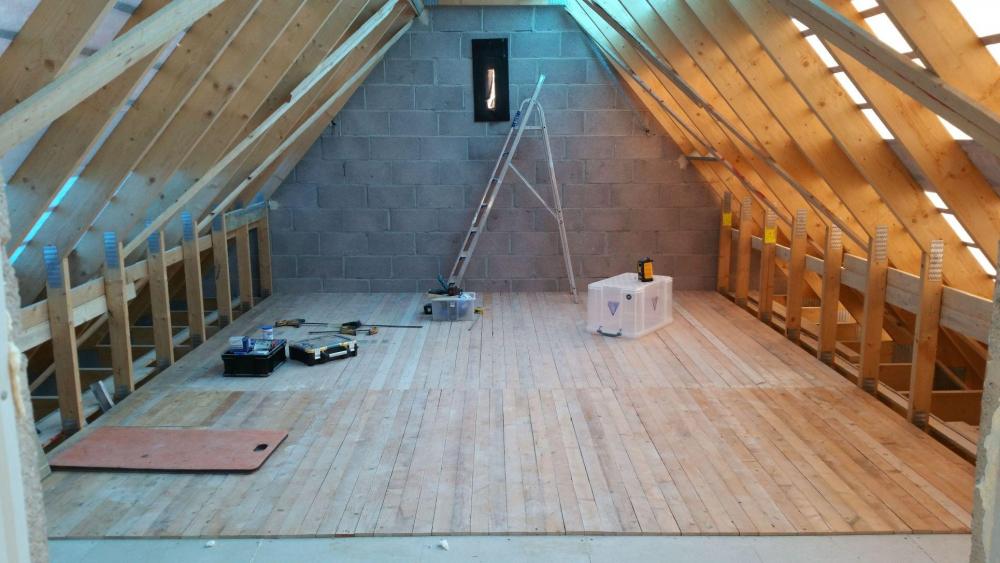


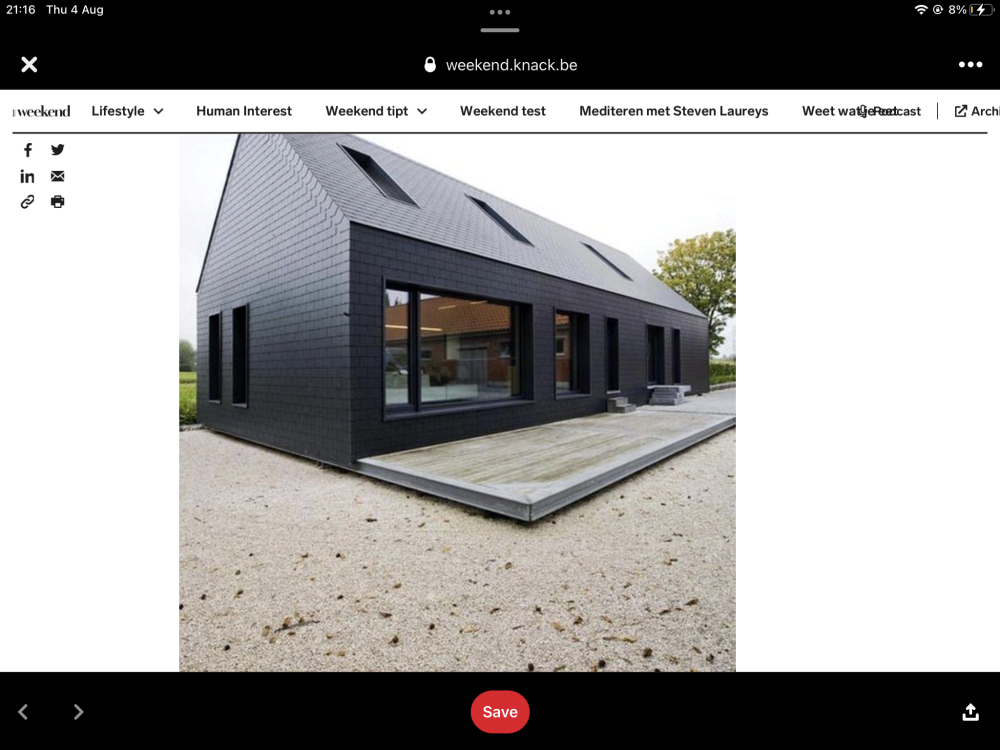



.jpg.c21f3ac78c9b7efd90cbdcb312744dc5.thumb.jpg.7adcad4c0e384f5ecd7d56b0618df6e5.jpg)
